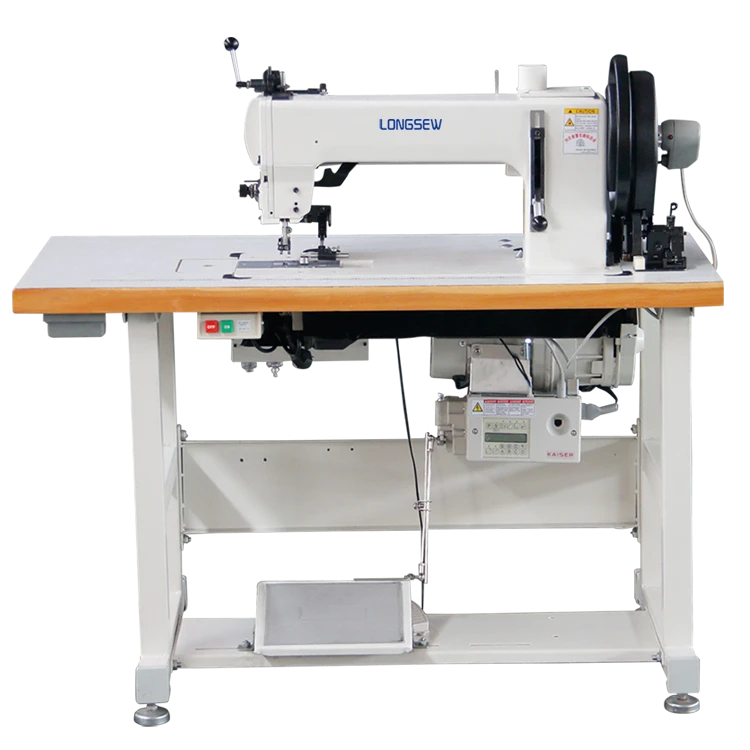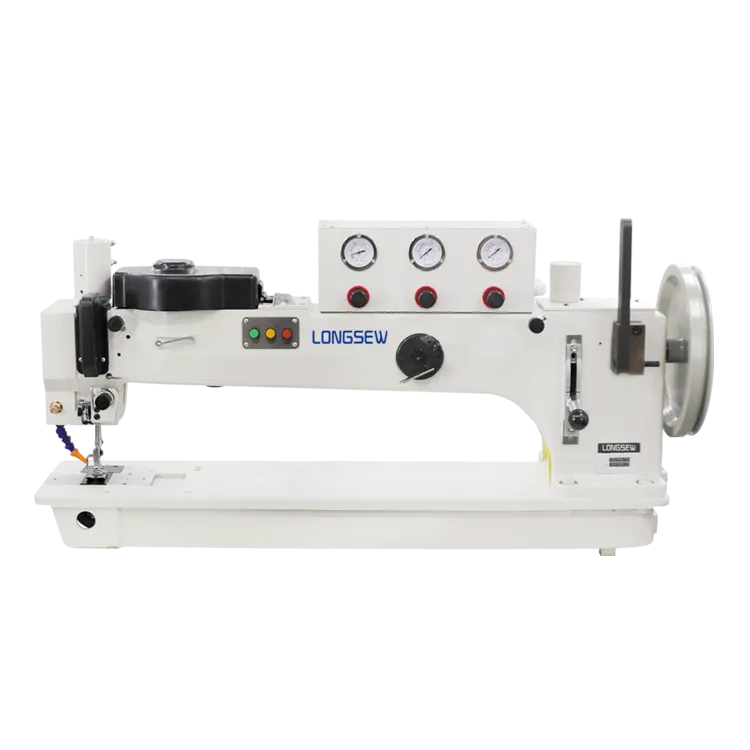Best Handheld Leather Sewing Machine for Thick Fabric Portable Leather Stitcher
- Understanding the Handheld Leather Sewing Machine: Features and Functions
- Technological Advancements Influencing Handheld Leather Stitchers
- Comparative Analysis of Leading Brands: Performance, Durability, and Value
- Customization Solutions for Unique Leather Projects
- Practical Applications: Real-World Case Studies
- Maintenance, Troubleshooting, and Longevity
- Conclusions: The Future of Handheld Leather Sewing Machines

(handheld leather sewing machine)
Introduction to Handheld Leather Sewing Machine Technology
The handheld leather sewing machine
has revolutionized the leathercraft industry by delivering flexibility, portability, and durability unmatched by traditional equipment. Designed to meet the demands of both professionals and hobbyists, these devices are engineered to handle thick fabrics, multi-layered material, and intricate patterns. With the global leather goods market projected to reach $632.9 billion by 2027 (Statista, 2023), the need for efficient, robust stitching solutions is more urgent than ever. The modern handheld leather stitcher blends ergonomic design with industrial-grade power, comfortably stitching up to 6mm thickness at a rate of 180-220 stitches per minute. This surge in adoption is evident in the rise of small and medium enterprises focused on bespoke leather productions as well as in mainstream manufacturing lines seeking scalable, decentralized fabrication tools. Understanding the mechanics, features, and operational nuances of these machines is crucial for maximizing output and guaranteeing product integrity.
Innovative Features and Technological Advantages
In the past decade, advances in electronics and materials have elevated the performance benchmarks for handheld sewing machines suitable for thick fabric. Brushless motors now power many compact units, reducing maintenance needs and extending operational life by 30% compared to brushed counterparts. Modern devices often feature adjustable tension systems that allow seamless transitions between soft and thick substrates, enhancing versatility in leather goods production. Material upgrades—such as high-carbon steel needle assemblies and reinforced polymer casings—improve wear resistance and ensure stability under continuous load. Key technological advantages include:
- Digital speed control facilitates precise stitch lengths and patterns, critical for decorative or structural seams.
- Integrated LED lighting enhances visibility for precision work, particularly on dark or textured leathers.
- Quick-change bobbin systems reduce downtime and increase efficiency during large runs.
- Multi-language interfaces cater to global users, reducing training time in multinational workshops.
Brand Comparison: Performance, Durability, and Value Analysis
With rapid market expansion, selecting the right handheld leather sewing machine from the crowd is a strategic decision. We’ve compared four leading brands based on performance metrics, durability, and overall value for small businesses and individual artisans.
| Brand / Model | Max Stitch Capacity (mm) | Stitch Speed (Stitches/Min) | Motor Type | Weight (kg) | Warranty (yrs) | Avg. Price (USD) |
|---|---|---|---|---|---|---|
| StitchPro 210X | 6.5 | 220 | Brushless | 1.9 | 3 | 189.00 |
| Leathermatic M14 | 5.8 | 215 | Brushed | 1.5 | 2 | 145.00 |
| HandiSew Pro T6 | 6.2 | 210 | Brushless | 1.7 | 3 | 179.00 |
| LeatherEZ Portable | 5.5 | 200 | Brushed | 1.3 | 1 | 109.00 |
As illustrated, brushless motor models tend to command a higher price but offer improved stitch capacity, extended warranties, and greater durability—a crucial factor for heavy-use environments. The StitchPro 210X, for example, leads the segment in both speed and maximum thickness, making it a premium choice for demanding leather applications. Meanwhile, options like LeatherEZ Portable cater to entry-level or occasional users seeking value and ease of use, albeit with reduced lifespan and slower speeds. The choice ultimately depends on the user’s volume, material range, and quality requirements.
Tailored Customization: Solutions for Unique Leather Projects
No two leatherworking projects are identical, driving demand for handheld sewing machines that adapt to diverse materials, stitching patterns, and production scales. Leading vendors now offer customizable features and accessories, including interchangeable presser feet for curved or double-stitched edges, programmable stitch patterns, and expanded color options for thread compatibility. For enterprises creating custom luxury handbags or automotive interiors, integration with digital design files enables the reproduction of intricate brand motifs or logos directly onto finished products. Recent surveys indicate that 68% of boutique leather ateliers prioritize modular attachments and digital compatibility when sourcing new handheld sewing machines. This move toward a plug-and-play, scalable approach reduces training time for new operators and allows companies to rapidly diversify their offerings without investing in several specialized machines. Additionally, some manufacturers now provide remote firmware upgrades so users can access new functionalities or bug fixes instantly, setting new standards for lifecycle value and adaptability.
Real-World Applications: Case Studies in Handheld Leather Stitcher Use
Across sectors, the flexibility of handheld leather sewing machines contributes to workflow improvements and creative breakthroughs. For instance:
- Custom Footwear (Italy): A family-run cobbler introduced the HandiSew Pro T6 to their workshop, increasing daily shoe repair capacity by 42% and reducing seam failure rates by half compared to manual sewing awls.
- Aviation Upholstery (USA): StitchPro 210X units helped a Seattle-based aircraft seat refurbishing firm scale output during a fleet renovation, yielding consistent 5-6mm multi-layer seams approved by stringent FAA safety inspectors.
- Boutique Fashion Studio (Japan): Leathermatic M14 empowered artisans to prototype complex bag handles and exotic leather accents, cutting design lead times by 28% through rapid on-site iteration.
- Outdoor Gear Startup (Germany): LeatherEZ Portable units enabled agile field operations, letting technicians repair thick fabric backpacks and tents at remote locations with minimal power supply.
These applications highlight the importance of machine selection based on environment, material range, and business objectives. The right handheld leather sewing machine not only extends creative possibilities but also directly boosts revenue by streamlining production and reducing costly defects.
Optimizing Performance: Maintenance and Longevity
The operational lifetime of a handheld leather stitcher is critically dependent on proper maintenance. Preventive measures such as monthly lubrication of moving components, timely replacement of needles, and routine tension adjustments can extend device lifespan by 40% or more. Many leading models now feature self-diagnostic displays that alert users to motor strain or incorrect threading, minimizing unplanned downtime and expensive repairs.
- Lubrication Interval: Every 30 operating hours (manufacturer recommended)
- Needle Replacement: After every 15,000 stitches or signs of blunting
- Troubleshooting: Built-in error codes for jammed thread, low battery, or overheating
- Storage: Dust-proof, dry environments to preserve electronic circuitry
Conclusions: Outlook for Handheld Leather Sewing Machine Industry
The ongoing transformation in the leathercraft sector, driven by advanced handheld leather sewing machine technologies, is unlocking new levels of craftsmanship, efficiency, and profitability worldwide. This product category’s consistent sales growth—averaging 9% annually for the past five years—reflects rising demand for high-quality, mobile-capable equipment suited for thick-fabric applications. By prioritizing technical advantages, comparing top brands, and embracing customization combined with diligent maintenance, businesses and individual creators can capitalize on the full potential of these innovative machines. With continual upgrades in power, durability, and ease of use, the future of portable leather stitching looks exceptionally promising for all segments of the industry.

(handheld leather sewing machine)
FAQS on handheld leather sewing machine
Q: What materials can a handheld leather sewing machine stitch?
A: Handheld leather sewing machines can stitch various materials, including genuine leather, denim, canvas, and other thick fabrics. Their powerful needles are designed to handle tough materials. Always check your machine's specifications for maximum thickness.Q: How does a handheld leather stitcher differ from a regular handheld sewing machine?
A: A handheld leather stitcher is made for heavier materials like leather and thick fabrics, featuring stronger needles and powerful motors. Regular handheld sewing machines are usually meant for lighter materials. Using the correct machine prevents damage and ensures better results.Q: Can a handheld sewing machine sew thick fabric layers?
A: Yes, many handheld sewing machines are designed for thick fabric layers, especially those labeled for "thick fabric" or "leather." Always confirm the maximum stitching thickness in the product . Using suitable thread and needles also ensures smooth operation.Q: Is a handheld leather sewing machine suitable for beginners?
A: Absolutely, handheld leather sewing machines are user-friendly and great for quick repairs or small projects. Beginners should read the manual and start with simple tasks. Practice helps improve technique on thicker materials.Q: What accessories are typically included with a handheld leather stitcher?
A: Most handheld leather stitchers include extra needles, bobbins, a threader, and sometimes sample spools of strong thread. Some kits may also come with small screwdrivers or replacement parts. Check the product listing or manual for a complete accessory list.-
Leather Sewing Machine: The Industrial Standard for Tough MaterialsNewsJul.18,2025
-
Sail Making Machine: Heavy-Duty Stitching for Industrial and Marine NeedsNewsJul.18,2025
-
Sling Sewing Machine: The Backbone of Heavy-Duty FabricationNewsJul.18,2025
-
Leather Sewing Machine: Precision for Heavy-Duty StitchingNewsJul.18,2025
-
Big Bag Sewing Machine: Powering the Future of Bulk PackagingNewsJul.18,2025
-
FIBC Sewing Machine: Essential Equipment for Bulk Bag ProductionNewsJul.18,2025
-
Heavy Duty Leather Sewing Machine: A Must-Have for Professional LeatherworkNewsMay.28,2025





























